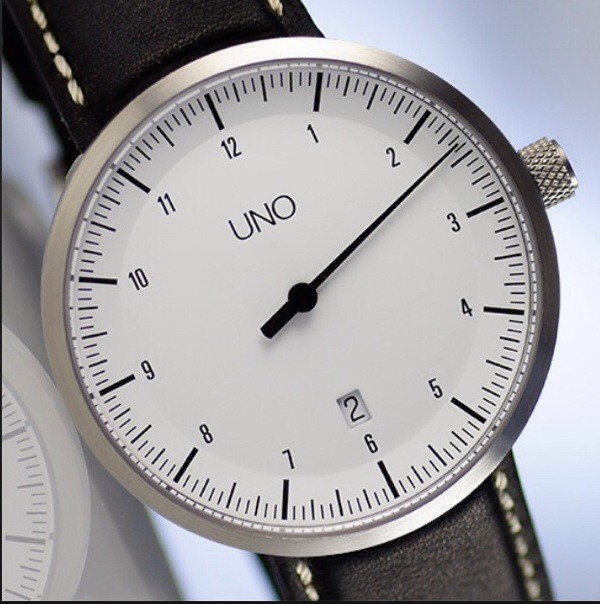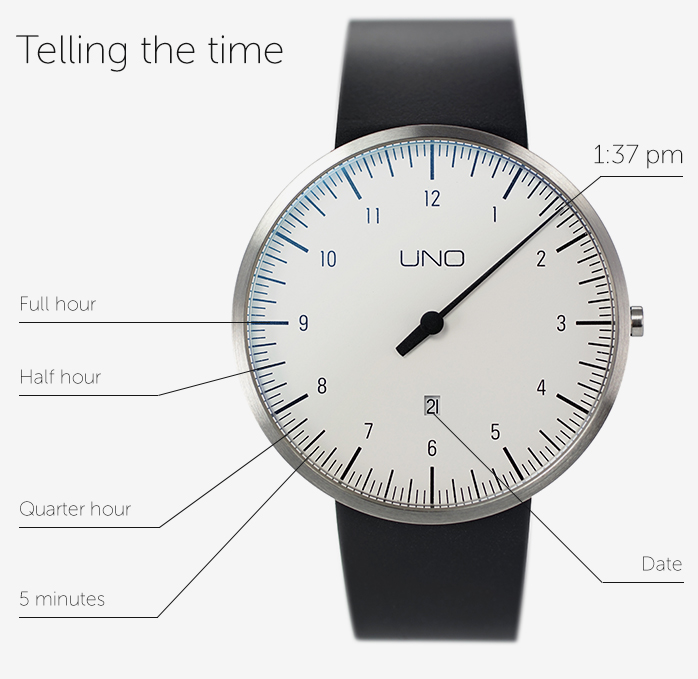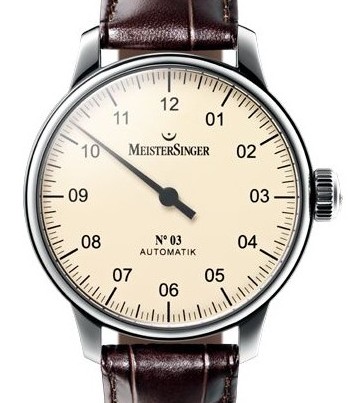There has always been a need for time. Before wrist watches, people had to get creative in telling the time. That usually meant relying on the sun, which led the way for the sundial. The invention of clocks — and then in a smaller scale, watches — meant a more reliable way to tell the time.
While looking at the sun’s position and the sky and guessing the time wasn’t an exact science, neither is reading a sundial. The main reason why? The minute hand on a clock or watch face gives a more accurate representation of just where in the hour time currently stands since its invention in the 18th century.
Now, you might think a watch without the minute hand would be useless and reverse-engineering. However, there are still fashionable models of watches that have only an hour hand, not to mention many older clock towers high above cities across the world. The UNO one-hand watch has just that — one hand. It also has more detail in the sense of marks for every five minutes while at the same time lacking the clutter of an extra hand, dial or logos.
Telling the time within an accuracy of just a few minutes feeds into the watch’s philosophy and simplistic approach. Why should a traditional mechanical watch tell you the exact time? Uno itself asks the question, “Do you really need such exact times as 3:03 p.m. or 10:39 a.m. in your everyday life? Wouldn’t ‘just after three’ or almost a quarter past 11 be entirely sufficient?”Other watches also have gone on sans minute hand, allowing for a sleeker, old-school look. However, they all trace their roots back to the original sundials which kept people ready and on time — albeit back when we weren’t in such a rush.






CHARLEY PHOTO OF THE WEEK: Greetings from Kane, Pennsylvania, and greetings from Charley. This is one of her favorite spots to roll in the grass in uptown Kane.


